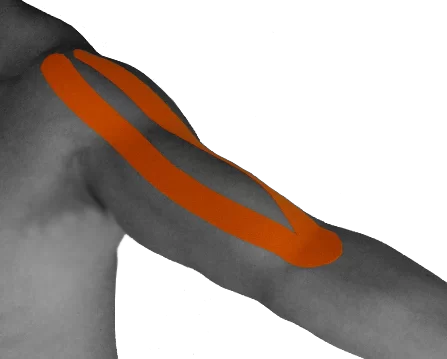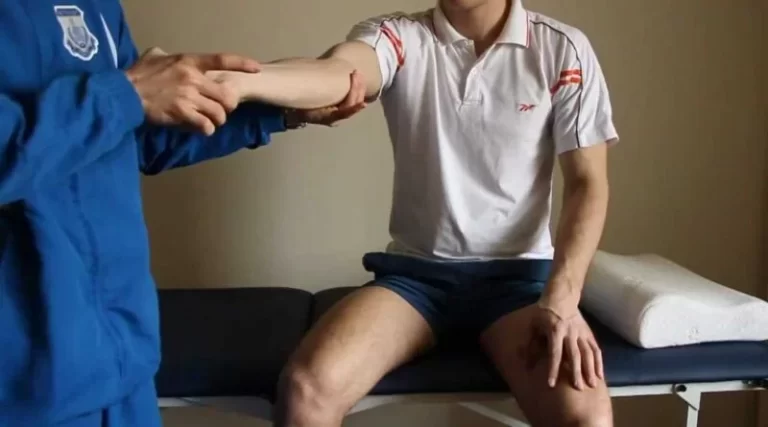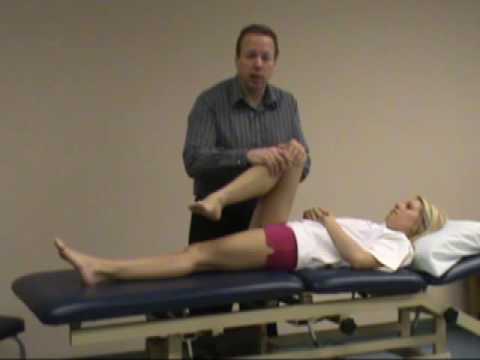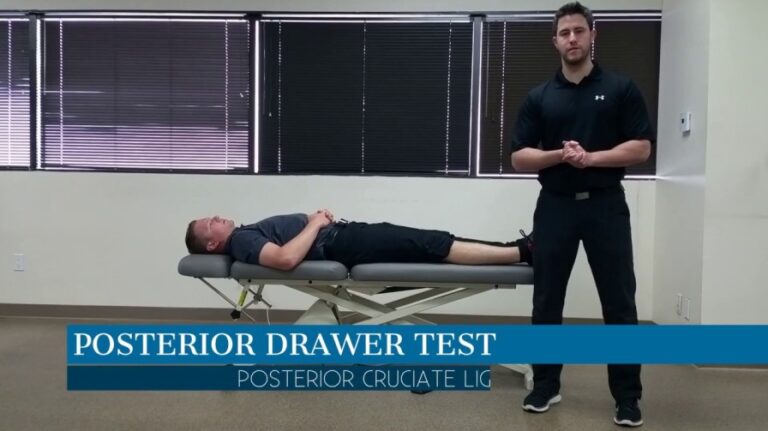Tapping Technique for Bicipital Tendinitis
Introduction
Taping (T) is a therapeutic tool and has become increasingly popular within the sporting arena. Taping has been used for a long time for the prevention and treatment of sporting injuries. not only sports injuries but all conditions
Bicipital tendinitis, or biceps tendinitis, is an inflammatory process of the long head of the biceps tendon and is a common cause of shoulder pain due to its position and function.
Bicipital tendinitis is a problem that affects the tendons of the biceps of the shoulder. The term bicipital refers to the two tendons that are involved in this problem. The symptoms of this problem are pain in the shoulder and the biceps muscle. The symptoms of this problem are worse in cold weather.
Anatomy of Bicipital Groove:
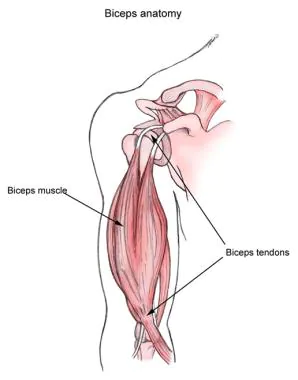
- Bicipital groove is a deep groove on the humerus that separates the greater tubercle from the lesser tubercle.
- It allows for the long tendon of the biceps brachii muscle to pass.
- The bicipital groove separates the greater tubercle from the lesser tubercle.
- It is usually around 8 cm long and 1 cm wide in adults
- It lodges the long tendon of the biceps brachii muscle between the tendon of the
- pectoralis major muscle on the lateral lip and the tendon of the teres major muscle on the medial lip.
- It also transmits a branch of the anterior humeral circumflex artery to the shoulder joint
- The insertion of the latissimus dorsi muscle is found along the floor of the bicipital groove.
- The teres major muscle inserts on the medial lip of the groove.
- with the middle third of the bone. It is the lateral wall of the axilla.
Function :
The bicipital groove allows for the long tendon of the biceps brachii muscle to pass.
What is a Bicipital Tendonitis?
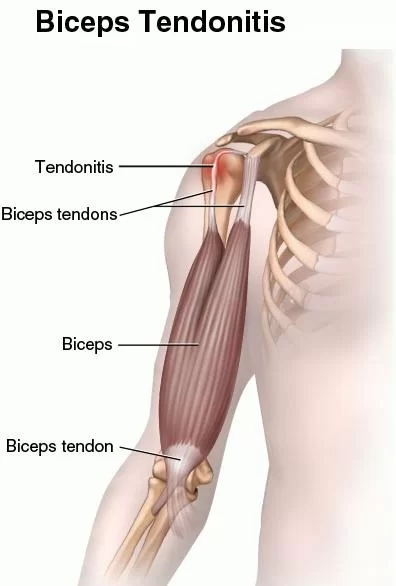
- Bicipital tendinitis is inflammation of the long head of the biceps tendon under the
bicipital groove. - In the early stage tendon becomes red and swollen as tendonitis develops the tendon
sheath can thicken. - In the late stage often becomes dark red in color due to inflammation
- Bicipital tendinitis or biceps tendinitis is an inflammatory process of the long head.
of the biceps tendon and is a common cause of shoulder pain due to its position and function. - The tendon is exposed on the anterior shoulder as it passes through the humeral
bicipital groove and insert into the superior aspect of the labrum of the glenohumeral joint.
Causes of Bicipital Tendinitis:
- The long head of the bicipital tendon passes down the bicipital groove in a fibrous sheath
- between the subscapularis and supraspinatus tendon, this relationship causes the biceps
- tendon to undergo degenerative and attritional changes that are associated with rotator
- cuff disease because the biceps tendon shares the associated inflammatory process
- within the supra humeral joint.
- Biceps tendinitis results when excessive, abnormal forces are applied across the tendon,
- including tension (pulling of the muscle and tendon), compression (pushing or pinching),
- or shearing (rubbing). When the tendon is subjected to repetitive stresses,
- it can become irritated, swollen, and painful.
- There are many factors that may lead to biceps tendinitis, include
- Activities requiring repetitive overhead movement of the arms, such as
placing dishes in a high cupboard or lifting boxes above the head.
- Rotator cuff tears.
- Weakness in the rotator cuff and muscles of the upper back.
- Shoulder joint hypermobility. (looseness)
- The shoulder joint and/or muscle tightness.
- Poor body mechanics. (how a person controls their body when moving)
- An abrupt increase in an exercise routine.
- Age-related body changes.
- Other pathology within the shoulder joint.
If you are experiencing biceps tendinitis, you may feel:
- Sharp pain in the front of your shoulder when you reach overhead,
- behind your back, or across your body.
- Tenderness to touch at the front of your shoulder.
- Pain that may radiate toward the neck or down the front of the arm.
- Dull, achy pain at the front of the shoulder, especially following activity.
- Weakness felt around the shoulder joint, usually experienced
- when lifting or carrying objects or reaching overhead.
- A sensation of “catching” or “clicking” in the front of the shoulder with movement.
- Pain when throwing a ball.
- Difficulty with daily activities, such as reaching behind your
- back to tuck in your shirt, or putting dishes away in an overhead cabinet.
- Pain when resting may become worse at night.
Symptoms of Bicipital Tendinitis
Patients will typically report sudden onset of discomfort around the region of the involved tendon.
Patients with biceps tendinopathy often complain of a deep, throbbing pain in the anterior shoulder that is intensified when lifting.
The pain is usually localized to the bicipital groove and might radiate toward the insertion of the deltoid muscle.
This makes it difficult to distinguish from the pain that is secondary to impingement or tendinopathy of the rotator cuff, or cervical spine pathology.
Pain from biceps tendinopathy usually worsens at night, especially if the patient sleeps on the affected shoulder.
Pain may be aggravated by overhead reaching, pulling, lifting, and repetitive activities.
Active elbow flexion may also provoke pain; however, weakness associated with elbow flexion may not be a reliable measure for assessing the presence of biceps tendinopathy, as this motion involves contraction of the short head of the biceps brachii and the brachioradialis muscles.
In cases associated with biceps instability, the patient may complain of an anterior shoulder “clicking” or “popping” sensation that may or may not be associated with throwing motions.
Kinesio Tapping For Bicipital Tendonitis
Kinesiological taping is a rehabilitative cum protective use of stretchable
kinesiological tapes provide reduction of pain, enhance performance, prevent injuries support the joints, reposition structure as well as for fascial and ligamentous correction.
It facilitates the healing process while providing a full range of motion with
support the joint’s supportive structure as well as mobilization effects.
Kinesiological tapes consist of 100%acrylic glue, which is a hypo allergic substance ,
making it suitable for application to all individuals.
The acrylic glue is masked on the tape in a fixed sine wave pattern.
When the tape is stretched it stores the potential energy, now due to its ability to stretch and
recoil in a longitudinal manner, all the potential energy is used in a specific direction,
minimizing the energy loss as well as increasing the efficacy of the tapes.
EFFECTS OF KINESIOLOGY TAPING :
- Stimulate or inhibit muscle function.
- Enhances proprioception.
- Support joints.
- Fascial correction.
- Pain relief.
- Enhances lymphatic drainage.
APPLICATION OVERVIEW:
- Subject position: The subject sitting in a relaxed comfortable position.
- Therapist position: Therapist standing behind the subject.
Procedure:
Follow the basic steps for muscle tapping.
Measuring the tape: the subject is asked to extend the arm, and the tape is measured from the radial tuberosity to 2 cm proximal to the coracoid process.
Select the required strip design for large muscle bulk and use the ”I” strip[ and in small muscles generally the ”y” strip the corners of tapes are rounded off.
Application of base: Apply the base with no stretch just on the anterior surface of the upper limb just below the radial tuberosity.
Application of the tail: when the subject’s muscle is in a stretched position therapist stabilizes the base with one hand and applies the rest of the tape with paper off or 10 % stretch.
At the end of the application rub the tape until the warmth is felt this is necessary to activate the glue.
How to remove Kinesio. Tapping?
# So now you’ve got your tape on and you’ve gotten that extra support during your
chosen sporting activity, it’s time to take it off,
so let us ease the process of removing kinesiology tape for you.
# The best tip we can offer when it comes to removing your kinesiology
tape is to peel the skin from the tape, not the tape from the skin.
# But in terms of the actual process, firstly make sure you’re removing
the tape in the same direction as the growth of the hair underneath it,
and whatever you do don’t rip the tape off like a plaster!
# Start slowly, folding the corners of the edge back gradually,
ensuring that you’re laying the removed tape on the back of the applied tape,
as opposed to pulling the tape above and away from your arm.
# As you’re peeling off the tape, hold your skin down with your other hand and either tap it,
or pull it gently in the opposite direction of the tape.
This helps the skin and the tape to separate more efficiently but with no discomfort.
If the tape has been applied over a particularly hairy part of the body,
it helps to press down on the tape as you are peeling it off, as the pressure helps avoid further pain.
It’s wise to have shaved the area before applying the tape but,
as this isn’t always practical, taking this precaution will be necessary for some.
Need a little extra assistance? Apply oil directly onto the tape,
rub it in, and wait around 10 to 20 minutes before removing it slowly.
This will help reduce the stickiness of the tape and make it easier to remove

